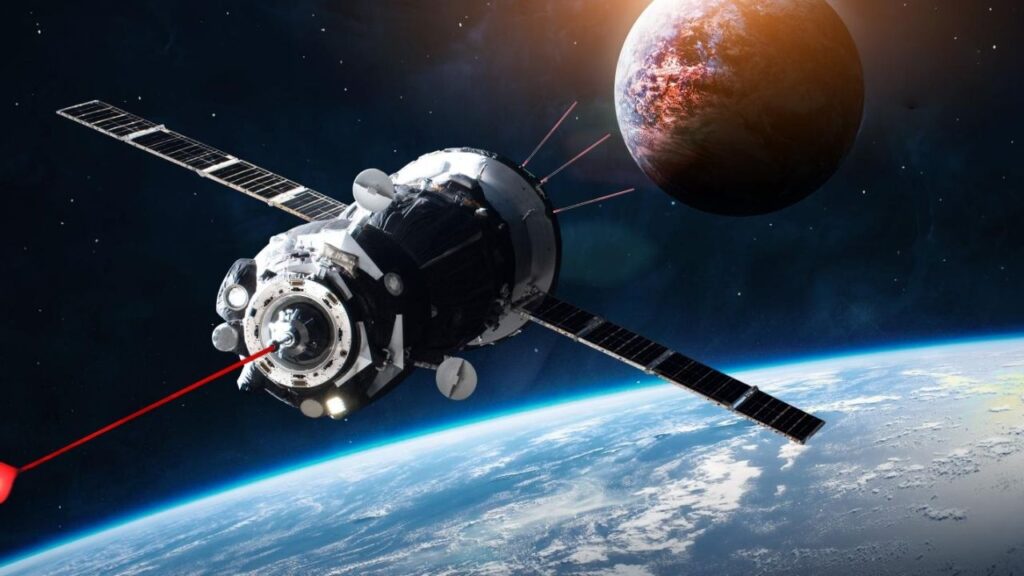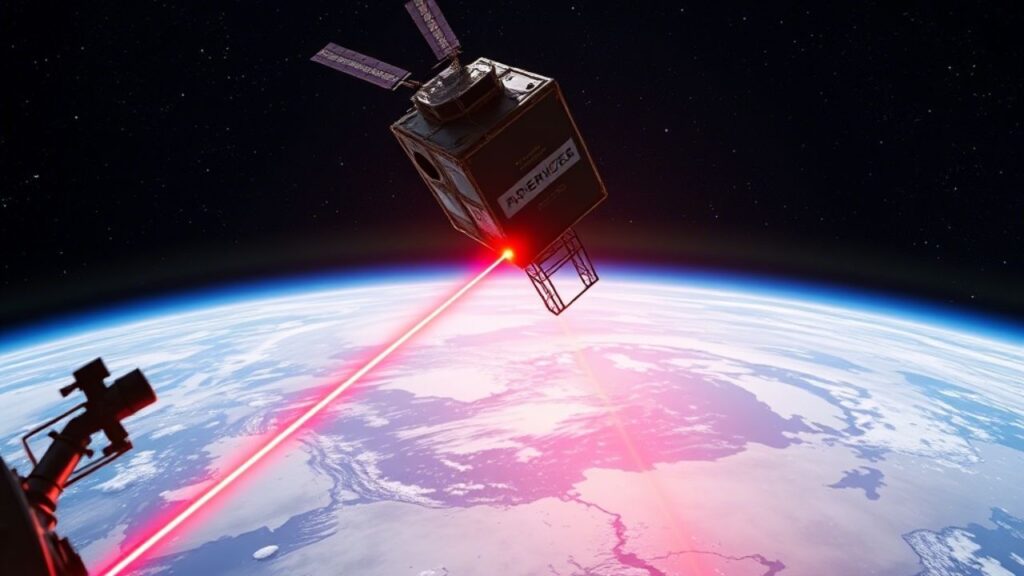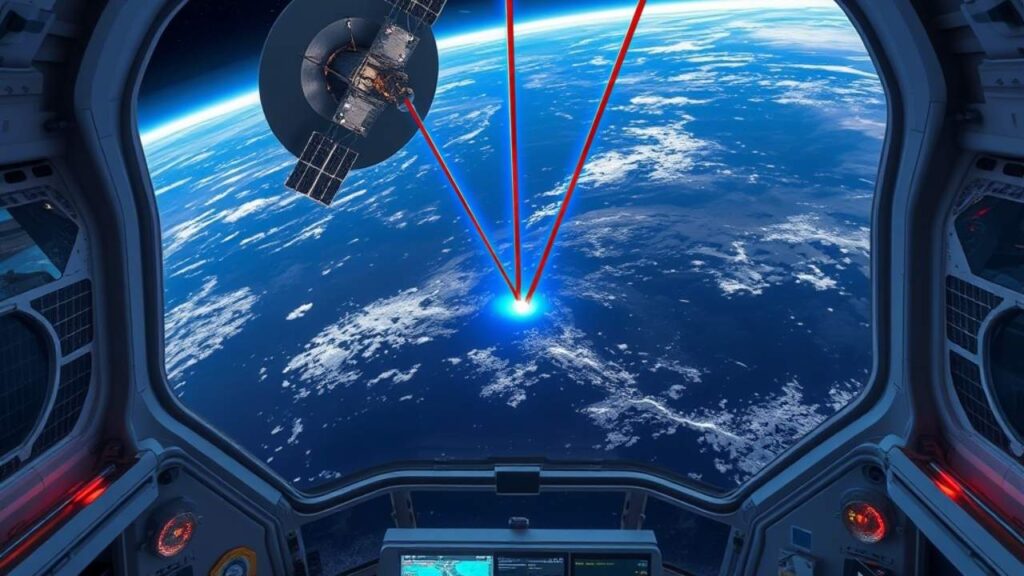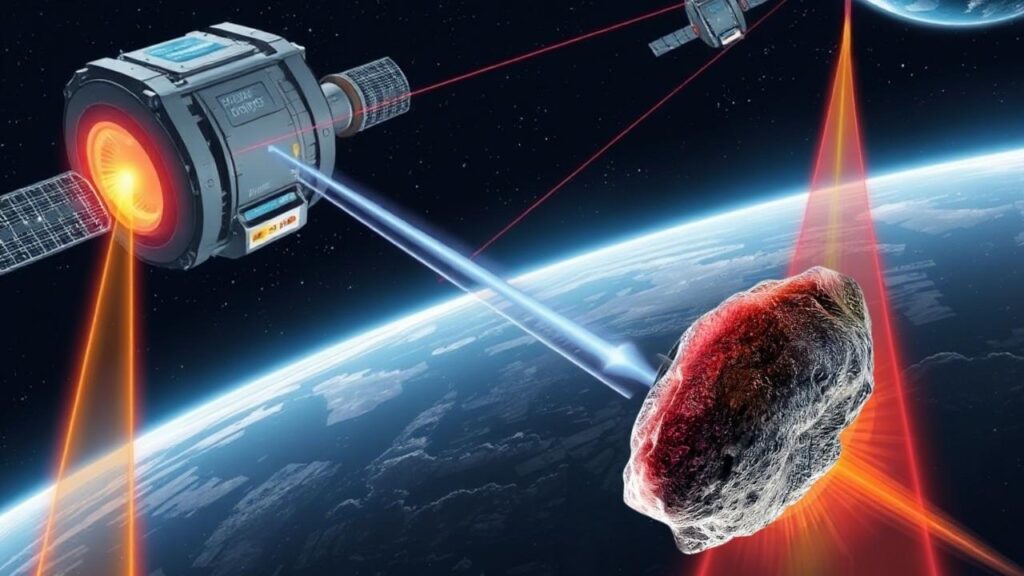Photonics in Space: In today’s world of instant messaging and HD video calls, fast and reliable communication is something we take for granted. But when you’re dealing with space exploration—especially missions stretching millions of miles away from Earth—getting data from point A to point B isn’t just challenging; it’s one of NASA’s biggest technical hurdles. That’s where photonics and laser communication come in.

NASA is pushing the boundaries of what’s possible in space communication using advanced laser-based systems that dramatically increase data transfer rates across deep-space distances. Called Deep Space Optical Communications (DSOC), this technology promises to transform the way we communicate with spacecraft and astronauts in the future. Whether you’re a curious student, an educator, or a seasoned space tech professional, understanding how photonics is revolutionizing NASA’s communication game offers a fascinating look into the future of interplanetary missions and human exploration.
Table of Contents
Photonics in Space
| Topic | Details |
|---|---|
| Technology Name | Deep Space Optical Communications (DSOC) |
| Core Concept | Using photonics and laser beams to transmit data in deep space |
| Speed Achieved | Up to 267 megabits per second from 19 million miles away |
| Distance Record | Over 140 million miles as of April 2024 |
| First Video Transmitted | A 15-second HD clip featuring a cat named Taters |
| Current Mission | DSOC is onboard the Psyche spacecraft |
| Benefit Over Radio Frequency (RF) | 10 to 100 times higher bandwidth |
| Official NASA Source | NASA DSOC Mission Page |
NASA’s application of photonics in space, particularly through the DSOC project, represents a monumental step in the evolution of deep-space data transfer. Moving from bulky, slow radio systems to high-speed laser communication opens the door to faster missions, deeper exploration, and richer science.
This shift doesn’t just benefit NASA. It will shape how private companies, international space agencies, and even future Mars colonists communicate across the solar system. As photonics technology becomes more refined, the line between science fiction and real-time cosmic communication is rapidly disappearing.
Whether you’re a budding engineer, curious student, or seasoned space professional, this is the frontier of communication to watch. Laser comms aren’t just next-gen—they’re now-gen.
What Is Photonics and Why Does It Matter in Space?
Photonics is the science of using light particles (photons) to transmit, process, and store information. It’s the underlying technology behind fiber-optic internet, barcode scanners, solar cells, and many advanced imaging tools in medicine. Now, NASA is harnessing this powerful field to build faster, clearer, and more robust communication lines through space.
Most traditional spacecraft systems use radio frequency (RF) communication, which relies on electromagnetic waves to transfer information. While RF systems have been foundational for decades, their data transfer limits are becoming more obvious with the growth of complex, high-bandwidth missions. Simply put, radio isn’t fast enough anymore for deep-space data needs.
Laser communication changes this by using light waves—specifically tightly focused laser beams—to send information across long distances. These systems can transmit significantly more data with less signal degradation, opening the door for live video, 3D imaging, and real-time sensor feedback from spacecraft in distant orbits.
How Laser Communication Works: A Step-by-Step Breakdown

Understanding the mechanics of laser communication doesn’t require a physics degree. Let’s break down how NASA’s DSOC system works in simple terms:
Step 1: Ground-to-Space Transmission
A high-powered laser from a facility on Earth, such as NASA’s Table Mountain Facility in California, shoots a tightly focused infrared laser beam into space. This serves as both a beacon for spacecraft alignment and a data uplink transmitting instructions or software updates.
Step 2: Onboard Spacecraft Reception and Response

The spacecraft—currently Psyche—carries a laser transceiver equipped with adaptive optics and a precise pointing mechanism. It captures the incoming laser signal and sends data back by emitting its own focused infrared laser beam toward Earth.
This requires pinpoint accuracy. Even the slightest misalignment could cause the signal to miss Earth entirely. That’s why auto-tracking systems and gyroscopes are essential components.
Step 3: Ground-Based Reception and Data Decoding
Back on Earth, massive telescopes such as Caltech’s 200-inch Hale Telescope at the Palomar Observatory collect the incoming light signal. These signals are extremely faint, so they’re processed using superconducting nanowire single-photon detectors (SNSPDs)—some of the most sensitive instruments on Earth.
Once captured, the light is decoded into usable data: videos, photos, sensor readings, and other mission-critical information.
Real-Life Successes: NASA’s DSOC Milestones
NASA has already achieved several major feats with its DSOC initiative. Here are some of the highlights that show this isn’t just theory—it’s already working:
- Psyche Mission Launch (October 2023): DSOC launched aboard the Psyche spacecraft, which is heading toward a metal-rich asteroid in the outer asteroid belt. This is NASA’s first full-scale test of laser communication in deep space.
- First Deep-Space Laser Video (December 2023): NASA successfully transmitted a 15-second HD video of a cat named Taters from 19 million miles away, achieving speeds of 267 Mbps. The feat showcased how laser comms outperform most broadband internet speeds on Earth.
- Record-Breaking Distance (April 2024): NASA confirmed that DSOC transmitted data over 140 million miles, breaking all previous records for space-based laser communication.
These demonstrations show not just technical excellence, but real-world potential for mission-critical data transfer, emergency communications, and scientific imaging.
Why This Matters: Real-World Applications of Laser Communication
Laser-based communication offers clear advantages for a range of upcoming missions—both robotic and crewed.
Higher Bandwidth for Scientific Discovery

Laser systems can transmit 10 to 100 times more data than RF. This means clearer imaging, real-time video conferencing with astronauts, and the ability to receive vast volumes of scientific data without delay.
This is critical for missions that involve:
- High-resolution mapping of celestial bodies
- Sample return missions
- Astronaut health monitoring
- Real-time navigation and hazard alerts
Safer and Smarter Human Missions
Laser communication supports reliable, real-time links that are essential for deep-space human missions, like Artemis (Moon) and future missions to Mars. With low latency and high speed, astronauts can stay connected with mission control for emergencies, research coordination, and even personal communications with family.
Cost-Efficiency and Compact Design
Laser communication hardware is often lighter and smaller than RF equipment, which means lower launch costs and more space for scientific instruments or supplies. Maintenance and power demands are also lower, adding efficiency to long-duration missions.
How Professionals Can Get Involved: Education and Career Tracks
If you’re looking to join this exciting field, there are many educational and career pathways that can lead to roles in photonics and space communication.
Recommended Degree Programs
- Electrical Engineering: Specializing in communication systems and circuits
- Optical or Photonics Engineering: Focused on lasers, lenses, and light transmission
- Physics: With an emphasis on electromagnetism, quantum optics, or space science
- Aerospace Engineering: Covering systems integration and spacecraft design
- Computer Science: Especially in data processing, signal decoding, and AI for spacecraft autonomy
Key Job Roles
- Photonics Engineer: Designs and tests laser systems
- Laser Communications Analyst: Oversees data transmission and optimization
- Space Systems Engineer: Integrates comms into spacecraft systems
- Telemetry and Tracking Specialist: Works with ground stations and orbital mechanics
- Deep-Space Data Scientist: Analyzes and interprets mission data
Skills to Develop
- Laser alignment and adaptive optics
- Photon detection technologies
- Signal processing and noise reduction algorithms
- Real-time data compression
- High-precision tracking and navigation
MIT Researchers Develop Transparent Solar Panels for Windows and Mobile Devices
The Rise of Wearable Technology: Materials That Make Smart Clothing Possible
Advancements in 3D Printing: How New Materials Are Expanding Possibilities
FAQs About Photonics in Space
How is laser communication different from radio?
Laser comms use infrared light, offering more bandwidth, faster data rates, and greater efficiency. Because the beam is narrow and focused, there’s less signal loss and lower interference compared to broad-spectrum radio.
Can laser beams travel through clouds or space debris?
Laser communication can be impacted by Earth’s atmosphere—especially clouds, moisture, or turbulence. That’s why NASA uses high-altitude locations for receivers. In space, however, the vacuum minimizes interference from debris unless it’s in the direct path of the beam.
Will future astronauts rely solely on lasers?
NASA envisions a hybrid system combining RF and laser communication. RF will offer broad, robust coverage, while lasers provide high-speed, high-capacity bursts for data-heavy tasks.
Is laser communication used commercially?
Yes, in terrestrial applications. Technologies like fiber-optic internet, free-space optics (FSO), and some satellite internet systems use laser principles. The space-specific versions are more advanced due to distance and alignment challenges.



















